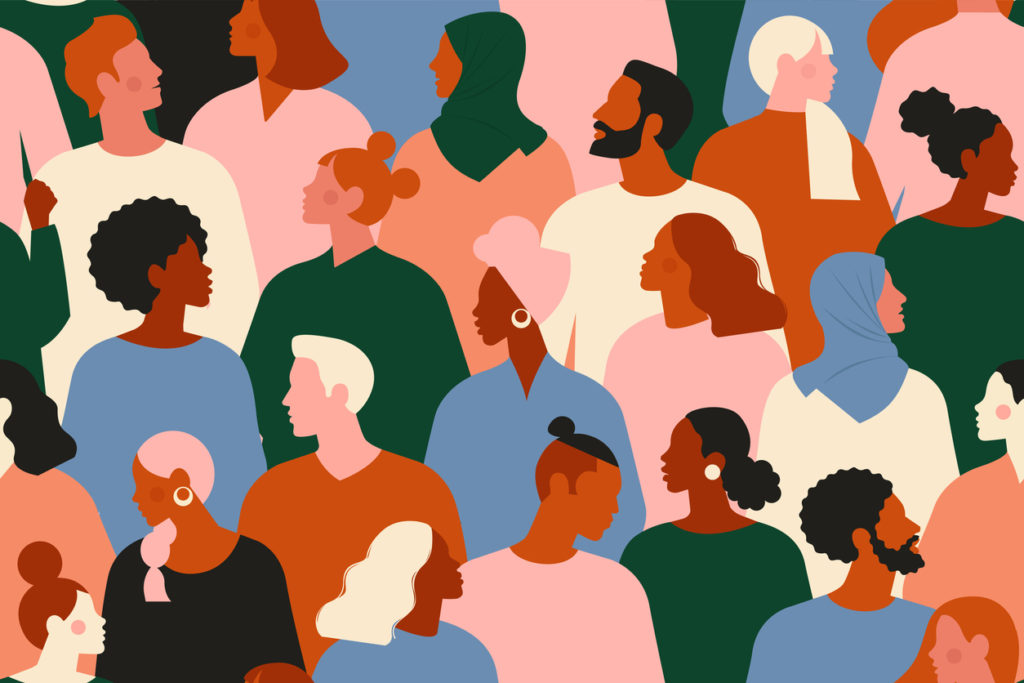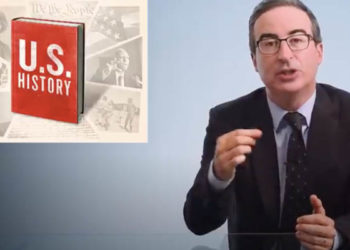Editor’s Note: Today’s guest post is by Laura Martin, Senior Project and Change Manager at Wiley, Vikki Davies, Journals Production Team Leader and Learning and Development Specialist at Taylor & Francis (T&F), and Leyla Sokullu, Strategy Manager at Elsevier.
What is an ERG?
How many of us know what ‘ERG’ stands for? Don’t worry, you’re not alone. An Employee Resource Group is a volunteer group of like-minded colleagues who come together to create positive change for their wider workplace community. These groups are not to be underestimated — in fact, they should be celebrated and promoted within organizations because they add tremendous value, and increase the organization’s value proposition for attracting, keeping, and developing talent.

What Is The Mission of Our ERGs?
Although ERGs can address an almost limitless range of subjects, our areas of focus are on gender diversity, equity, and inclusion. Each of our groups are open to everyone, and all are welcomed and included in our steering groups and events. There’s no such thing as a ‘women-only’ issue. It’s well documented, and has been discussed in The Scholarly Kitchen in several articles (“Mind the Gap: Gender Disparity in Scholarly Publishing Revisited”, “Gender Diversity: We Can Do Better”, and “A Woman’s Worth: Examining the Gender Pay Gap among UK Scholarly Publishers”) that women are underrepresented and underpaid in decision-making roles at the top of our organizations and boards. But improved practices, processes, and policies around parental leave, representation, and different leadership styles benefit everyone. In addition, publishers play an influential role in who gets heard, especially as we re-evaluate our practices and processes around selecting conference speakers, editorial board members, and peer reviewers, as well as around our end-to-end author experience. As such, it’s critical that there is a dedicated space within publishing organizations for colleagues to talk about what gender diversity, equity, and inclusion looks like for us as well as our researcher communities, in order to drive more effective change. Having a dedicated ERG creates a platform for colleagues to talk about what is relevant to us, and to flag key issues to our leadership for wider consideration – as well as to keep the pressure on to achieve meaningful change that sticks.
Why we care about gender diversity and inclusion
Wiley’s Lean In UK
Laura Martin, Co-Chair of Lean In UK at Wiley
Wiley Lean In Oxford was established in 2015 by two colleagues and, as much as we took inspiration from Sheryl Sandberg’s organization when the group was founded, we’ve since made it more our own. In 2020 we scaled up to become Wiley Lean In UK. We collaborate with other ERGs (like our LGBTQ+ Network) in the UK and elsewhere and make our material available to all colleagues globally. We strive to host meaningful events, curate relevant learning tools and content, and promote a set of peer networks to provide confidential and informal support for colleagues. The Lean In UK Steering Group selected ‘connection’ and ‘inclusion’ as our core values; we often discuss how we are more than just one identity and that it’s important to create a workplace that supports the inclusion of all identities. As such, any proposal for an event is evaluated against these values and we ask ourselves ‘would this event or learning resource help us to promote connection and/or inclusion?’ We recently outlined our key objectives:
- Support the learning and development of colleagues so that they are more effective and empowered
- Explore key issues for our communities and provide a platform for inclusive discussion, potential policy change, and learning
- Create a community that is inclusive and connected, in which colleagues feel seen, heard, and valued
- Give leadership an insight into key community issues, needs, and drivers
We are still learning and are aiming to give a platform for all colleagues, regardless of gender, to create a workplace that is more gender inclusive and diverse, at all levels.
Elsevier’s Thrive
Leyla Sokullu, Co-Chair of Thrive London at Elsevier
The Elsevier Women Network (EWN) London began in late 2017. We are part of a global network of chapters focused on raising awareness on issues relating to gender balance and providing space to discuss issues pertinent to the Elsevier community. When we started, we hosted a few events focusing on senior leadership, career development, and coffee breaks. These activities ignited a conversation on inclusion and diversity at all levels – and increasingly (in the last three years) has become a key enabler for our organization’s culture. We recently went through a re-branding exercise, to be more gender inclusive, albeit continuing to focus on our core mission. We continue to be on a journey to foster space and opportunity for discussion on gender inclusion, collectively.
Our Mission
Highlight the talent that women bring to the company and promote professional progress for all women in Elsevier through advocacy, education, and information.
Our Objectives
Thrive’s objectives are:
- To foster awareness of the benefits of gender balance
- To support women in navigating their careers
- To provide global and local networking, mentoring, and development opportunities
Taylor & Francis’s Women in Publishing (WiP)
Vikki Davies, Committee Member of Women in Publishing at Taylor & Francis
WiP began in 2017 when two colleagues had an idea for a lunchtime book club to discuss texts related to women in business, such as Sheryl Sandberg’s Lean In. Two more colleagues got involved and a few conversations later we hosted our first event, with 90 attendees and two inspiring speakers; T&F’s HR Director Dami Patel and Kudos co-founder Charlie Rapple. We have been hosting at least one event of this size every quarter since.
As with the other ERGs discussed here, our mission statement and objectives are central to everything we do.
Our Mission
Women in Publishing is a network to celebrate the success of women at Taylor & Francis and promote the professional development of women in the company. Women in Publishing is open to everyone, not just women. We are interested in diversity and inclusivity and open to opportunities to support and collaborate with other diversity and inclusion initiatives.
- To showcase women leaders at all levels of the company at T&F and inspire future women leaders
- To provide online and in-person discussion spaces for issues that affect women in publishing
- To promote and support the career development and well-being of colleagues at T&F
- To facilitate professional and personal networking at T&F
We revisit these each time we host an event to ensure we remain focussed on our mission and are delivering the most appropriate content for our audience.
Key Lessons Learned
Lesson #1: Strategy is key
Laura Martin
Align with the strategic aims of your company – if your values and those of your group don’t match your organization’s, your group will be de-prioritized. But make it work for you. Most organizations are looking to increase their reach and relevancy, as well as to attract and retain talent. How better to support these aims than by creating a space to talk about gender diversity, equity, and inclusion? If you struggle to talk about the gender makeup of your workforce, then look at your customer base – are there ways that you can reach a broader audience and give a platform for minority voices among your customers in a meaningful way? Start somewhere that resonates with you and your group, but also ties into the broader strategic aims of your organization. For example, our steering group is exploring issues around identity. We’re currently organizing a panel event, ‘Enabling Us: Discussing Disability in the Workplace’, where we will invite colleagues to talk about what ‘good’ looks like in terms of increasing inclusion and diversity for those with either a visible or invisible disability. Our reasoning is that we want to create a working culture in which all colleagues feel like they belong and can thrive, which is in line with our company’s strategic aims.
Lesson #2: You don’t always have to spend money to create impact
Vikki Davies
An example of how we have created high impact with minimal cost was the week of online content we hosted on the lead-up to a recent International Women’s Day. We used our group’s Yammer page to post thought-provoking content each day, using formats such as book reviews, written interviews, and TED Talk recommendations. Each post asked for comments and questions and what followed were a host of discussions on vital issues, such as work/life balance, HPV awareness, and what it means to be a feminist. This didn’t carry a ‘cost’, but it did garner attention and made an impact among colleagues.
Lesson #3: Don’t be afraid to try new things
Vikki Davies
T&F’s WiP group introduced a “Breaking the Taboo” series into our program of events, in which we examine areas of life that people do not normally talk about. We held our first event in March 2020, with a medical doctor talking about the menopause. She talked about the science of the menopause, dispelled the myths, and brought a humor and lightness to the subject that was refreshingly optimistic. Other areas that we hope to include in this series are bereavement, miscarriage, menstruation, and infertility. We always ask our audience for feedback and welcome suggestions for new topics. Our advice is, keeping trying new things. Experimentation helps you learn what works (and what doesn’t).
Our ERG has also had a positive impact on the committee members. This was new to us all when we first joined and WiP has provided an opportunity for us to develop new skills, as we work with others from across the business in a way that does not happen in our day jobs.
Lesson #4: Don’t be afraid to start small
Leyla Sokullu
There wasn’t an active ERG in London when I started the EWN / Thrive London Chapter of Elsevier. I was surprised that there wasn’t dialogue happening on a variety of topics related to gender inclusion. I started somewhat on my own, since there was a chapter of EWN active in Oxford, but not in London – so I went ahead and organized a workshop called ‘Speed Dating’ for careers. It was well attended and there was natural interest. It was great to see the overall support from my colleagues and senior leaders alike in engaging in conversations outside of what would be considered ‘usual business’. If you are interested in finding out more about, or engaging in general on a topic, and believe it may be useful for your colleagues – take the lead. Put up a poster, organize an event, and send out that meeting invite – whether you have the support of a formalized ERG or not, you may find that things naturally fall into place as you take even the smallest of actions. It was lovely to see colleagues reaching out to become part of an organizing committee, and for support on how to establish an ERG.
Lesson #5: Divide and conquer
Laura Martin
Bandwidth for a group of volunteers who have busy day jobs will always be a challenge. We have an active steering group, but it wasn’t until we identified clear roles and responsibilities that we were able to gain traction and scale up our activities. One person can’t do it all alone. Do what you can and consider: which actions can be divided among other people? Connection is key – don’t try to do everything by yourself, or in silos. If you’re thinking of running a virtual event, it may be that another community group in your region or elsewhere is considering the same conversation topic. Reach out to your network and see what you can achieve together.
Lesson #6: Leverage other community groups in your organization
Leyla Sokullu
The best and most memorable part of my experience of leading the activities of the London chapter was getting to know some of the other ERG leads and helping them on their journey of establishing an ERG or collaborating on topics where there was an overlap. ERGs are meant to be bottom-up initiatives to raise and discuss issues that may not otherwise get discussed or engaged with (for one reason or another). It is fundamentally important to leverage other community groups – not only because they provide support but also can be guiding posts to better advocating for inclusion and diversity.
What else?
What are you doing in your organization? Are you interested in joining forces and sharing ideas? Get in touch. We don’t have the answers, but we are determined to ask the questions and seek solutions that make a positive impact on the scholarly publishing community.
Discussion
4 Thoughts on "Guest Post — Driving Gender Diversity, Equity, and Inclusion in Scholarly Communications: The Power of an Active ERG"
Thanks so much for sharing your experience and advice! ERGs are a key part of our DEI roadmap and there’s much we can learn from the points you make here.
Good piece, covering initiatives from various publishing leaders
While these are all positive interventions, my concern is that they suggest diversity is the end goal here. It is not. Diversifying and recognising diversity within a workforce should improve conditions and community within the workplace. It is not enough to try and get more diversity (read: non-white cisgendered hetero men) in a workplace if it remains hostile, unsupportive or unpleasant to work there. Take for example, how our current global pandemic is increasing the caring burden disproportionately for women (Power, 2020) to the extent that it is harming their professional development (Flaherty, 2020) – now that we know this, how are we and our employers going to help our colleagues with these burdens? I think ERGs should be intra-organisational working groups that effect change as well as being supportive knowledge-exchanges.
This is an insightful comment with a lot of content, thank you! I will do my best to address each point…
1. Diversity should not be the only end goal: I completely agree. That is why the core values for our group are inclusion and connection. Numbers alone will not get us there, especially if new players merely perpetuate a limiting culture. I strongly believe that culture is like water – it takes the form of whatever vessel it is in. This is why inclusion is so vital. But, ERGs alone will not get us there. Sustainable, systematic change needs to be endorsed throughout an organisational structure. However, ERGs play an influential role in mobilising a community.
2. Changing the players does not guarantee that the game changes. You are right, a truly inclusive working environment means that colleagues are supported, holistically. Your example of colleagues with caring responsibilities have been negatively impacted by COVID-19 is an excellent one. Colleagues with caring responsibilities should be supported, encouraged, and considered a priority for professional development within the organisation. We have absolutely seen the impact on women in particular during this pandemic – amongst colleagues and customers. Your comment prompted the Wiley Lean In UK Steering Group to put this on our next agenda for discussion, thank you.
3. ERGs should be intra-organisational: I agree, I think there is an opportunity to do something fantastic that is industry wide. Most of our organisations share similar challenges, so why not collaborate? There are some fantastic groups out there – the one that comes to mind is PublisHer, but I know there are others. As this is often done above and beyond day jobs, family responsibilities, etc, it can be tough to mobilize – but starting small, is still a start. Vikki, Leyla, and I are already discussing collaborating again. Perhaps the SSP could be a good vehicle for this…
Thank you again for your great comment – I’d love to hear your response to my thoughts above.



